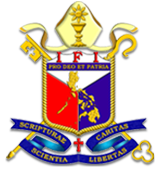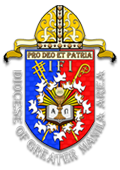Parish of the
Holy Sepulchre
1414 Quirino Ave.
cor. Zamora Street,
Paco, Manila
Rev. Fr. Rodrigo Dolorosa
Parish priest
About the Parish
-
Parish of the Holy Sepulchre
1414 Quirino Ave. cor. Zamora Street, Paco, ManilaHISTORY
After the proclamation of the Philippine independence in Kawit, Cavite on June 12, 1898, an assembly of priests gathered in Tarlac on October 23, 1899. Here the appointment of Msgr. Gregorio Aglipay by General Emilio Aguinaldo as head of the Nationalist Church was upheld. However, this assembly, loyal to the Pope, requested the Vatican to transfer the administration of the parishes to the Filipino clergy. Don Isabelo delos Reyes Sr. was tasked to convey this request to Rome; but the mission failed.
In the gathering of the Union Obrera Democratica (UOD), the first conglomeration of labor unions in the Philippines consisting of 2,000 workers, it declared the separation from Rome and proclaimed the establishment of the Iglesia Filipina Independiente on August 3, 1902. Msgr. Gregorio Aglipay was appointed Obispo Maximo. The first Holy Eucharist was held in Tondo and attended by high ranking government officials and the people who courageously embraced the new faith. Since then started the propagation of the new Nationalist Church. Among those who responded to the call were the
adherents from the community of Paco in Manila.Msgr. Gregorio Aglipay asked Don Luciano de la Rosa, one of the initiators for an independent church in the community, to hold a Mass in Paco. Don Luciano sought permission from Tandang Bandina, keyholder of the Penafrancia chapel on Visita Street (now called Burgos), but refused the request of Msgr. Aglipay. But Don Luciano was deeply committed to carry on with their purpose. On November 28, 1902, Don Luciano, together with Geronimo Morales, Ariston Estrada, Benito del Prado, Luis and Alejandro Acuna, someone called “Pitong,” etc., went to the chapel with the intention of holding the Mass. But at the chapel door to block the entrance was Father Tobar, Roman Catholic priest from the Saint Paul group of San Marcelino, who refused the holding of the Mass. Despite this failed attempt, still the Mass was held inside the yard of Juan Evangelista on Visita Street (now called Burgos).
The successful establishment of the Paco Church was initiated by the residents from the following streets: Manggahan, Tanque (now location of Unilever), Sagat, Santibanes, Anak ng Bayan, Dela Pena (now Penafrancia), Lico (now Zamora), Gomez, and Visita (now Burgos). The first church was erected on the lot owned by Don Luciano de la Rosa on San Antonio Street corner Penafrancia. The Rev. Fr. Jose Panganiban was the first parish priest.
In 1907 the big fire in Paco destroyed the church made of light materials. A makeshift church made of nipa and bamboo was built on the lot owned by Susano Gonzales Sr. on Gomez/Ilaya. His family also donated the icon of the Blessed Lady of Penafrancia.
With the leadership of Don Placido Ong, president of the Laymen’s Commission, they were able to raise funds to construct a more permanent structure at the vacant lot on the corner of Zamora and Canonigo (now Quirino); this construction was done between 1919-1920. This is the present site of the IFI Paco Church. In 1920 the image of the Holy Sepulcher was donated by the Ong family (Lucio and Placido) who inherited it from their ancestors during the Spanish regime. Obispo Maximo Aglipay consecrated the church and blessed the image of the Holy Sepulcher.
In August 1935, before the celebration of its feast day, the church burned down but a miracle happened. The building was gutted down to ashes but only the icon of the Santo Sepulcro remained unscathed. To celebrate the fiesta, a temporary chapel was built inside the compound of the family of Emeterio Estrella on Zamora Street (now used as a parking area). The IFI adherents rejoiced due to the miracle of the Santo Sepulcro. The procession passed through the streets with even the non-members lighting candles at their homes to pay homage to the miraculous image.
In 1940 the church building was rebuilt on Quirino-Zamora, but again destroyed in the liberation of Manila during World War II. For the second time, the entire church burned down but the Santo Sepulcro, again, remained miraculously unscathed. Again, a temporary chapel was erected this time at the corner of Zamora and Burgos. After the war, the efforts of Emeterio Estrella, Aquilino Blas, Napoleon Bataclan, and many others, paid off with funds raised to build a new and permanent structure at its regular site on Quirino and Zamora. The building was finished in 1948, and since then it remains to be the same church being used until now. With several renovations inside and outside its structure, the IFI Paco Church is an imposing edifice, used temporarily as the Pro-Cathedral of the Diocese of Greater Manila Area during the time of Bishop Isabelo delos Reyes Jr. (called Beluco).
CONGREGATION
-
HOW TO GET HERE
-
Google Map
GET IN TOUCH
-
Get in touch with us
Find us on social networks
facebook instagram youtube twitter googleplus linkedin
or drop us a note



